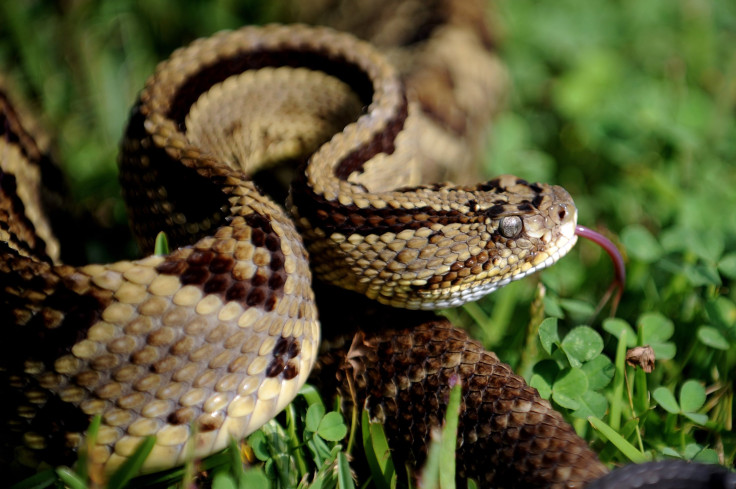Two-Headed Rattlesnake Found Near Arkansas Home

A two-headed rattlesnake was found by an on-duty electrical worker in Jonesboro, Arkansas, on Wednesday. Rodney Kelso, an electrical worker, claimed to have found the snake while inspecting a home.
According to CBS affiliate KFSM, Kelso found the two-headed timber snake off Arkansas Highway 284. The snake, which measured out to be 11 inches, was with two other snakes that had normal appearances. Kelso put on a pair of protective gloves and guided the rattlesnake into a box.
"Fifty years on the ridge and never have seen such," Kelso told Arkansas Online Friday.
PHOTOS: 2-headed snake found in Arkansas https://t.co/YhhdSklch7 pic.twitter.com/3XrSYQ4QmH
— FOX13 Memphis (@FOX13Memphis) September 9, 2017
The two-headed snake is under the care of Forrest L. Wood Crowley's Ridge Nature Center, according to Fox affiliate WBHQ. Caretakers plan to test whether the snake will be able to eat out of both mouths. The nature facility will eventually put the snake on display for visitors to see.
"It does happen from time to time in nature," Cody Walker, an education program specialist at the nature center, told Arkansas Online Friday. "Usually they die from complications."
Two-headed snakes are rare, but they have been spotted before. Reptiles like turtles, snakes and lizards can be born with two heads. In 2002, National Geographic reported that two-headed animals have their own personality and motives for doing things, just as any other creature would. It can, however, make decision-making more challenging for the creature.
"The two heads have to decide they're both hungry at the same time, and then they have to agree to pursue the same prey," National Geographic reported. "Then they might fight over which head gets to swallow the prey."
According to National Geographic, "since snakes operate a good deal by smell, if one head catches the scent of prey on the other's head, it will attack and try to swallow its second head."
A second head isn't considered to be a genetic mutation. It would be classified as an error in fetal development, which is more closely aligned to how conjoined twins (also known as Siamese twins) can occur with humans.
Conjoined twins, while rare, can occur once every 200,000 births. The survival rate for conjoined twins ranges from 5 percent and 25 percent. They are originally formed as identical twins, which will make them the same gender. The twinning process can occur by a woman releasing two eggs instead of one or she'll produce only one egg that eventually split into two after fertilization is completed.
Rattlesnakes are venomous creatures. The reptile tends to be large in size, too. The snake is known for its distinctive rattle, which often causes predators to turn the other away.
They're often found in North America and South America, but Live Science reported that the greatest population of rattlesnakes resides in the southwestern U.S. Arizona, in particular, houses the most species of rattlesnakes. Approximately 13 types of rattlesnakes live in the state.
© Copyright IBTimes 2024. All rights reserved.












